
Roots
Consider a quiet moment, perhaps while observing a parent or grandparent tending to their hair, or even in the simple act of brushing your own. There is a silent language spoken, a transfer of something more than technique. Hair, in its fundamental structure and the practices surrounding it, holds a profound, often unseen, power to connect generations.
It is not merely a biological attribute; it is a living archive, a repository of familial wisdom, cultural memory, and shared identity that stretches back through time, shaping who we are and how we relate to those who came before us. This understanding begins with recognizing the very fabric of textured hair and its inherent diversity, a diversity that itself speaks to ancient migrations and adaptations across human populations.
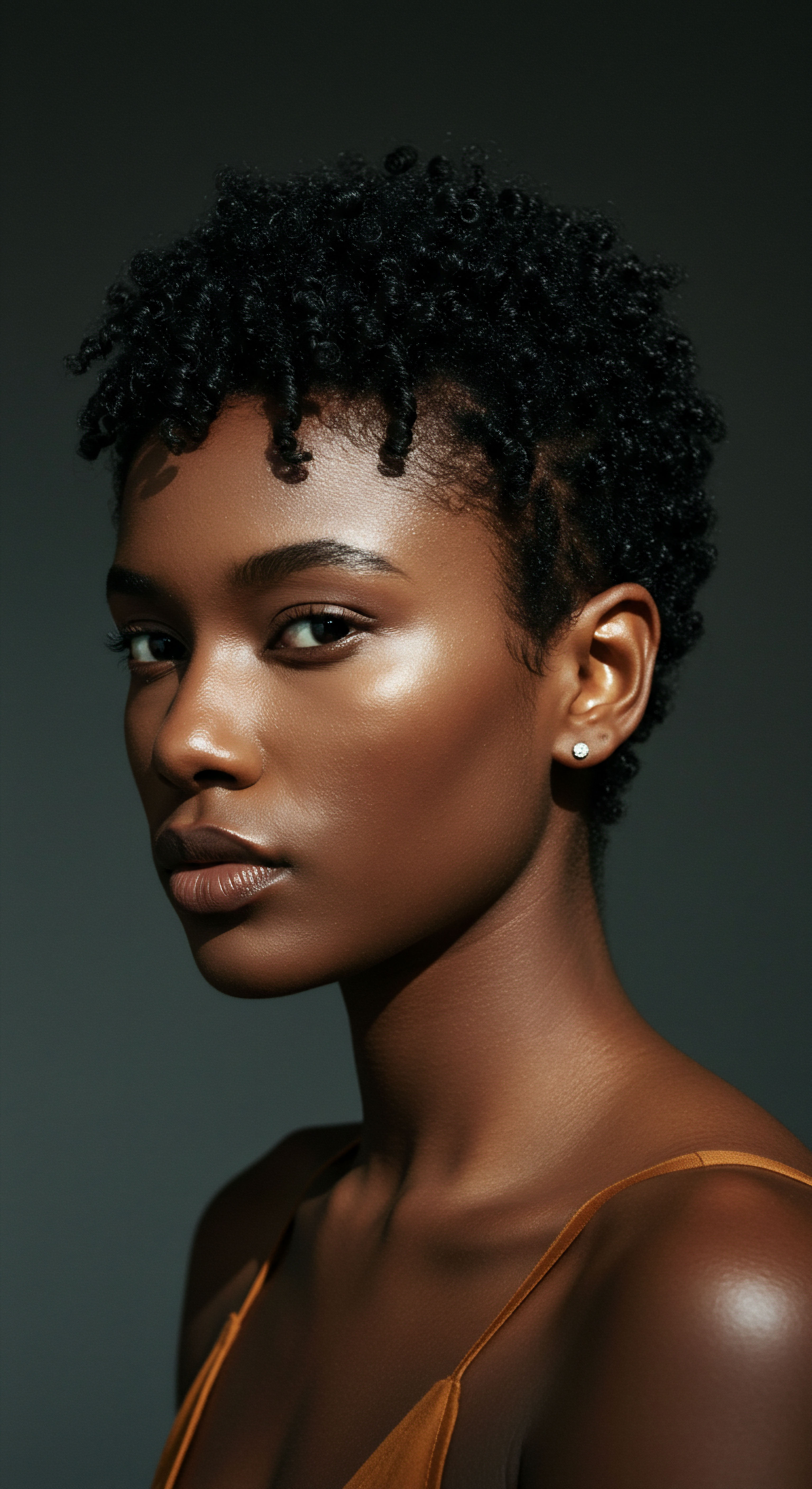
The Architecture of Textured Hair
To truly appreciate the generational continuity expressed through hair, one must first understand its biological underpinnings. Textured hair, whether tightly coiled, loosely curled, or wavy, possesses a unique anatomical structure that influences its appearance and behavior. Unlike straight hair, which typically grows from a round follicle, textured hair emerges from an oval or elliptical follicle.
This shape causes the hair shaft to twist as it grows, creating the characteristic curl pattern. The degree of this elliptical shape directly correlates with the tightness of the curl, from broad waves to delicate coils.
Each strand comprises three primary layers ❉ the outermost Cuticle, the middle Cortex, and the innermost Medulla (though not all hair types possess a medulla). The cuticle, a protective shield of overlapping scales, is particularly important for textured hair. Its lifted nature, due to the twists and turns of the hair shaft, can make textured hair more susceptible to moisture loss and tangling. This inherent characteristic necessitates specific care practices, many of which have been passed down through family lines, evolving into traditions.
Hair’s physical makeup, from follicle shape to cuticle structure, inherently influences the care rituals that bind generations.
Understanding the physical traits of hair is not just about science; it is about acknowledging the biological heritage that defines us. Hair characteristics are passed down through generations, telling the story of our ancestors and adapting to environments over millennia. This genetic inheritance shapes not only the appearance of our hair but also the very approaches we take to care for it.

Classifying Textured Hair
The systems used to classify textured hair, while sometimes debated, serve as a helpful guide in understanding its varied forms. These classifications often consider curl pattern, density, and porosity.
- Curl Pattern ❉ Often categorized numerically and alphabetically (e.g. 3A, 4C), this system describes the shape of the curl, from loose waves to tight coils. A family might share a predominant curl pattern, leading to shared knowledge about its specific needs.
- Hair Density ❉ This refers to the number of individual hair strands on the scalp. High-density hair can appear very full, while low-density hair might seem sparse. Care techniques often differ based on density, influencing how products are applied or styles are chosen.
- Hair Porosity ❉ This measures how well your hair absorbs and retains moisture. High porosity hair has a more open cuticle, absorbing moisture quickly but losing it just as fast. Low porosity hair has a tightly closed cuticle, making it harder for moisture to enter but easier to retain once inside. Knowing a family’s typical hair porosity can guide product choices and conditioning methods across generations.
These classifications, while modern constructs, help articulate the nuances that generations have intuitively understood about their hair. They provide a common language for discussing hair needs, whether between a parent and child or among community members.

A Shared Lexicon of Hair
Beyond scientific terms, families and communities develop their own language around hair. Words like “kinky,” “coily,” “nappy,” “good hair,” and “bad hair” carry immense historical and social weight. While some terms historically bore negative connotations, particularly due to Eurocentric beauty standards, many have been reclaimed and re-contextualized within textured hair communities. This shared vocabulary, passed from elder to youth, transmits not only descriptions of hair but also the societal attitudes, struggles, and triumphs associated with it.
The lexicon itself becomes a vehicle for generational dialogue, a way to discuss experiences with discrimination, self-acceptance, and collective pride. For instance, the term “nappy,” once used disparagingly, has been transformed by some into a symbol of resilience and authenticity within the natural hair movement.
| Term Coil |
| Scientific Connection Hair strand forming tight spirals |
| Generational Relevance Shared understanding of specific detangling and moisture needs |
| Term Shrinkage |
| Scientific Connection Hair appearing shorter when dry due to curl pattern |
| Generational Relevance Lessons on styling and length perception passed down |
| Term Porosity |
| Scientific Connection Hair's ability to absorb moisture |
| Generational Relevance Recommendations for product types (oils, creams) from elders |
| Term Protective Style |
| Scientific Connection Hairstyles that shield hair ends |
| Generational Relevance Knowledge of longevity, hair health, and traditional techniques |
| Term These terms reflect both the scientific reality and the lived experience of textured hair. |

Hair Growth Cycles and Influencing Factors
The hair growth cycle—anagen (growth), catagen (transition), and telogen (rest)—is a universal biological process, yet its manifestations and the factors influencing it can be subjects of intergenerational observation and advice. For textured hair, breakage can sometimes interrupt the anagen phase, leading to perceived slower growth or difficulty retaining length. Generations share wisdom on practices that support length retention, from gentle detangling methods to protective styling.
Beyond biology, external factors such as diet, stress, and even societal pressures play a role in hair health. Conversations around hair loss, for instance, often bridge generations, with older family members offering traditional remedies or simply a listening ear to younger individuals navigating similar concerns. The very act of discussing these challenges and seeking solutions becomes a bonding experience, reinforcing familial ties.
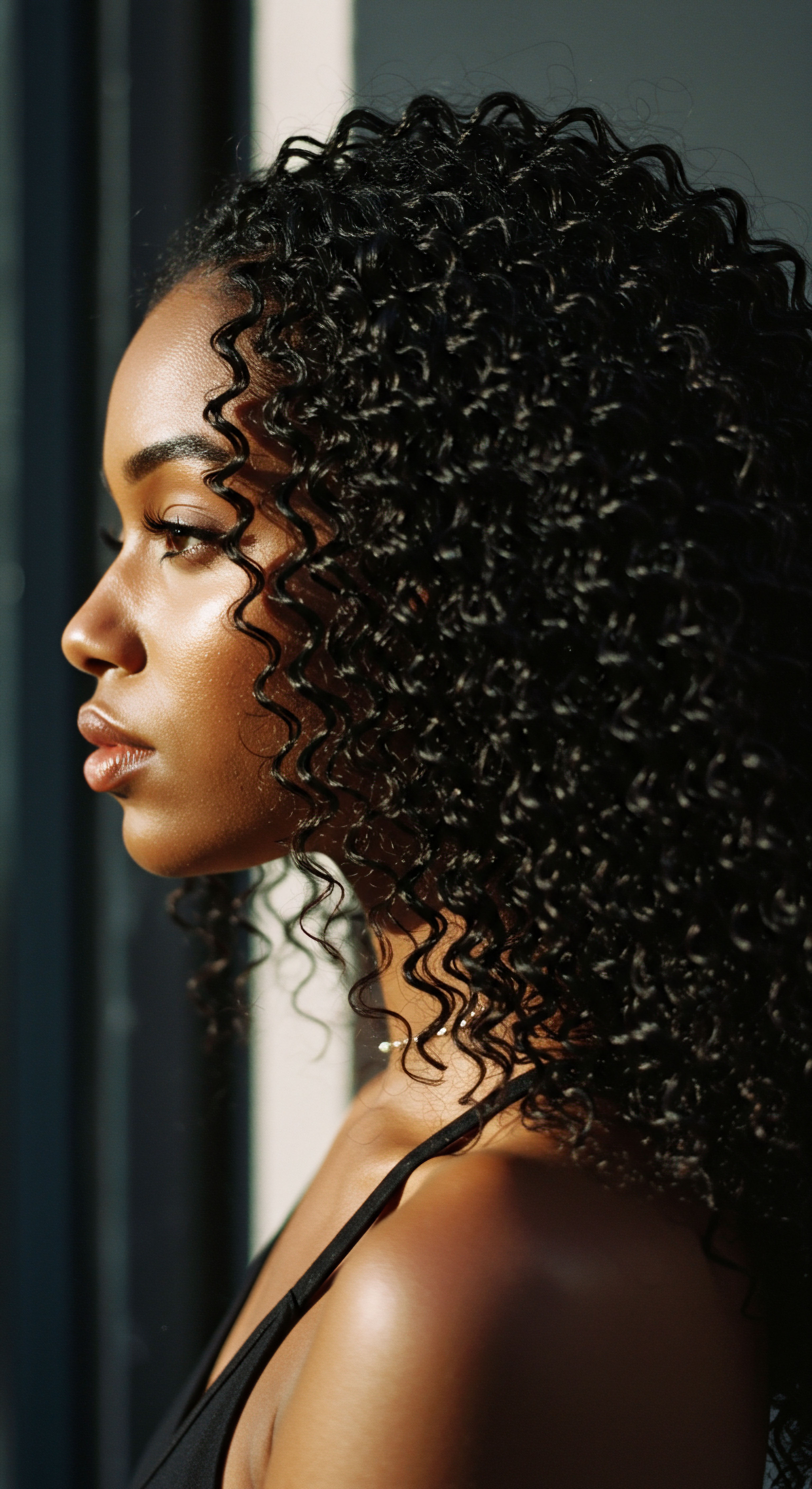
Ritual
As the sun dips below the horizon, painting the sky in soft hues, a quiet scene unfolds in many homes. Hands, perhaps weathered by time or youthful in their eagerness, tend to hair. This daily or weekly practice, seemingly simple, holds a profound significance. It is within these moments of intimate care that the abstract concept of hair traditions truly comes alive, becoming a tangible link between generations.
These are not just routines; they are rituals, steeped in shared knowledge, comfort, and the silent transfer of cultural legacy. They shape not only the appearance of hair but also the individual’s sense of self and connection to their heritage.

The Encyclopedia of Protective Styling
Protective styling, a cornerstone of textured hair care, represents a vast collection of techniques passed down through familial lines and community networks. These styles, such as braids, twists, and cornrows, serve a dual purpose ❉ they shield delicate hair ends from environmental damage and manipulation, while simultaneously acting as a visual testament to cultural continuity.
Learning to braid or twist often begins in childhood, a gentle initiation into a world of shared practice. A grandmother might teach a mother, who then teaches her child, the rhythm of the fingers, the tension to apply, the sections to create. This instruction is more than technical; it carries stories, laughter, and sometimes, the quiet patience of a shared afternoon. These styles also carry historical weight, with origins tracing back to various African cultures, where specific patterns could denote age, marital status, or tribal affiliation.
The knowledge transferred includes not only the physical execution of the style but also the understanding of how long a style should last, how to maintain it, and how to gently remove it to avoid damage. This collective wisdom ensures the health of the hair while preserving an artistic and cultural heritage.
Protective styling transcends mere aesthetics, acting as a living library of cultural heritage and care techniques passed from one generation to the next.

Natural Styling and Definition Techniques
The contemporary natural hair movement has spurred a renewed appreciation for defining and celebrating hair’s inherent texture. Techniques like wash-and-gos, finger coils, and twist-outs are not entirely new; they are often modern interpretations of methods used by previous generations, perhaps with different products or tools.
The pursuit of curl definition can become a shared project within families. A younger person might experiment with new products, while an elder shares insights on moisture retention or specific detangling strategies learned over decades. This intergenerational exchange of knowledge creates a dynamic learning environment where ancient wisdom meets contemporary innovation. The shared effort in achieving a desired look fosters a sense of community and mutual support, extending beyond immediate family to wider social circles.

Wigs and Hair Extensions Mastery
Wigs and hair extensions, while sometimes viewed as modern accessories, also possess a long history, serving purposes ranging from adornment and expression to protection and conformity. Their use within families can also be a generational practice, with skills in selection, application, and maintenance passed down.
In some communities, particularly those impacted by historical discrimination against natural hair, wigs and extensions provided a means of navigating societal expectations. The mastery of these tools often involved intricate techniques for blending, styling, and caring for the added hair, knowledge that was shared and refined over time. This practice highlights the adaptive nature of hair traditions, evolving to meet changing social landscapes while still retaining a connection to the past.
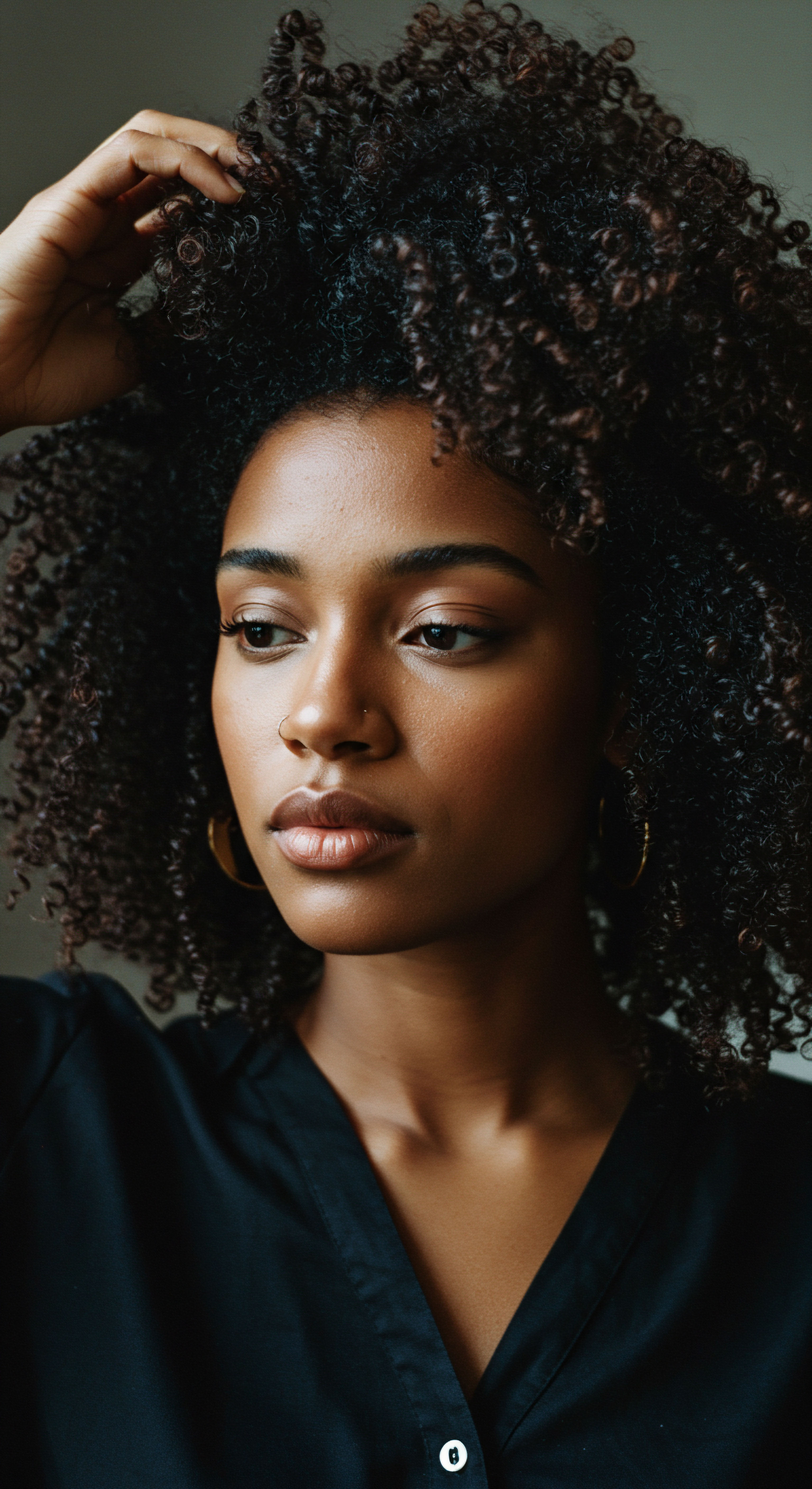
Heat Styling and Thermal Reconditioning
Heat styling, including pressing, straightening, and thermal reconditioning, holds a complex place within textured hair traditions. For many generations, the pressing comb or flat iron was a primary tool for achieving a straightened look, often influenced by Eurocentric beauty standards. The rituals surrounding these practices—the careful sectioning, the application of heat protectants, the skilled hand needed to achieve a smooth finish—were often learned at home, a shared experience between parent and child.
While contemporary discourse emphasizes the potential for heat damage, particularly with frequent use, the historical context of these practices cannot be overlooked. For some, straightened hair represented access, acceptance, or simply a different aesthetic preference. The wisdom passed down often included warnings about excessive heat, techniques for minimizing damage, and remedies for scorched strands. This knowledge reflects a continuous negotiation between desired styles and the imperative to maintain hair health.

The Complete Textured Hair Toolkit
The tools used for textured hair care are as diverse as the hair itself, and their significance often transcends their functional purpose. From wide-tooth combs and detangling brushes to satin bonnets and specialized styling creams, each item plays a role in the generational continuum of care.
The act of receiving a first hair tool, perhaps a special comb or brush, can be a rite of passage, signifying a growing responsibility for one’s own hair care. Similarly, the sharing of homemade hair remedies or specific product recommendations across family members speaks to a collective journey of discovery and refinement in hair care. This toolkit, both physical and conceptual, forms a tangible link, reinforcing the idea that hair care is a shared endeavor, a practice refined through generations of collective experience.
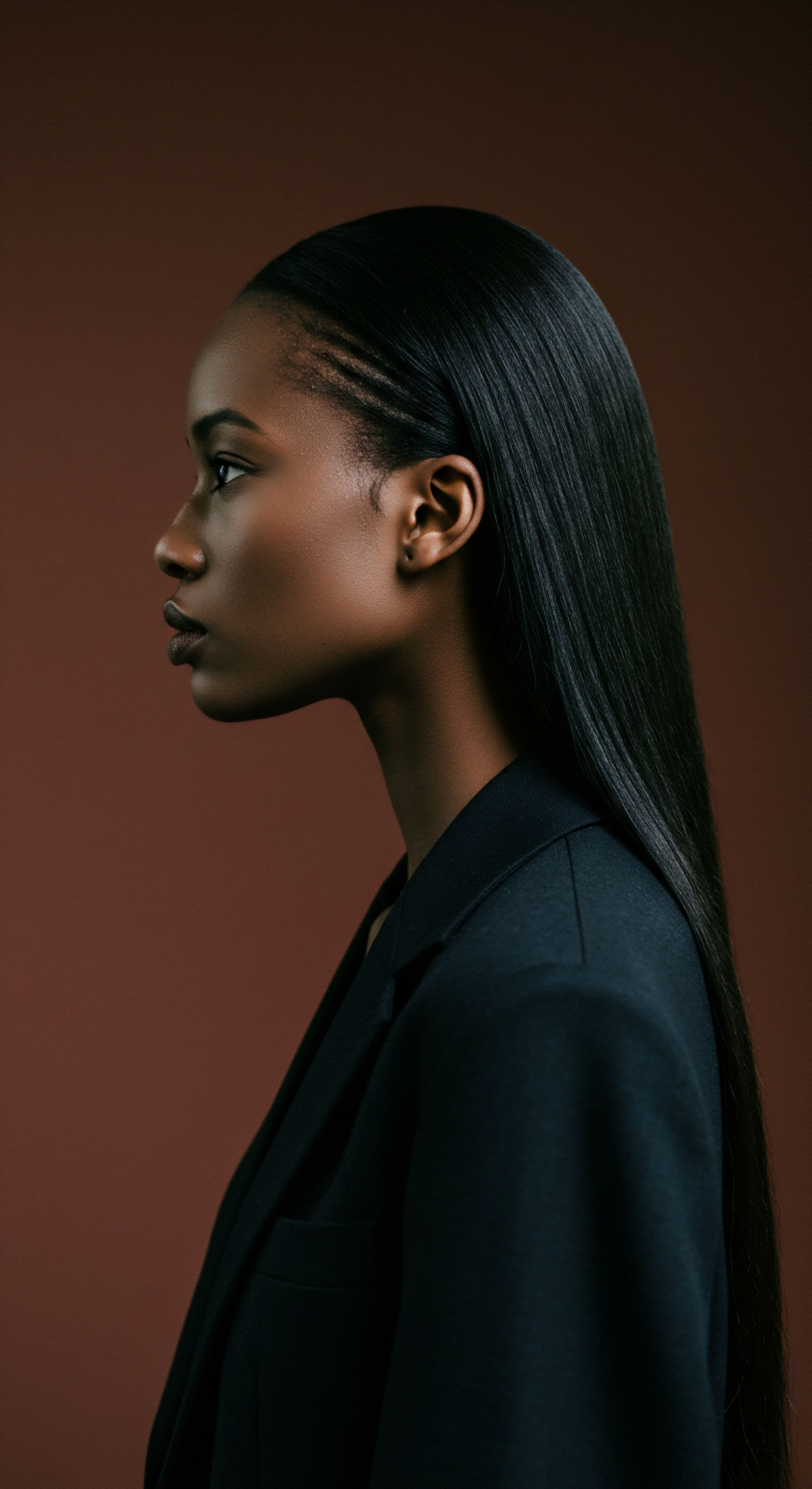
Relay
To truly comprehend how hair traditions connect generations, one must move beyond the visible styles and daily routines, venturing into the deeper currents of culture, psychology, and social history. It is in this exploration that the profound resonance of hair practices becomes apparent, revealing how ancestral knowledge, societal pressures, and personal identity intertwine to form a powerful, continuous legacy. This section will delve into the intricate ways hair serves as a conduit for intergenerational understanding, resilience, and even the transmission of unspoken experiences.

Hair as a Cultural Repository
Hair is far more than a biological attribute; it is a profound cultural marker, a living archive of identity and collective memory. Across diverse cultures, hair practices have served as powerful non-verbal communication systems, conveying information about an individual’s age, marital status, social standing, and even spiritual beliefs. For many Black communities, particularly, hair became a symbol of resistance and continuity amidst profound historical disruption. The forced stripping of cultural identity during the transatlantic slave trade, which included the shaving of heads, paradoxically intensified the significance of hair as a link to ancestral lands and practices.
In pre-colonial African societies, specific hairstyles could denote one’s tribe, social hierarchy, or even a life event. This deep cultural grounding persisted, albeit in modified forms, through generations of diaspora. The resilience demonstrated in maintaining these practices, often in secret or in defiance of oppressive norms, speaks volumes about the enduring power of hair as a cultural anchor. The act of a mother braiding her child’s hair, for instance, can be seen as a direct continuation of practices dating back centuries, a silent affirmation of belonging and heritage.
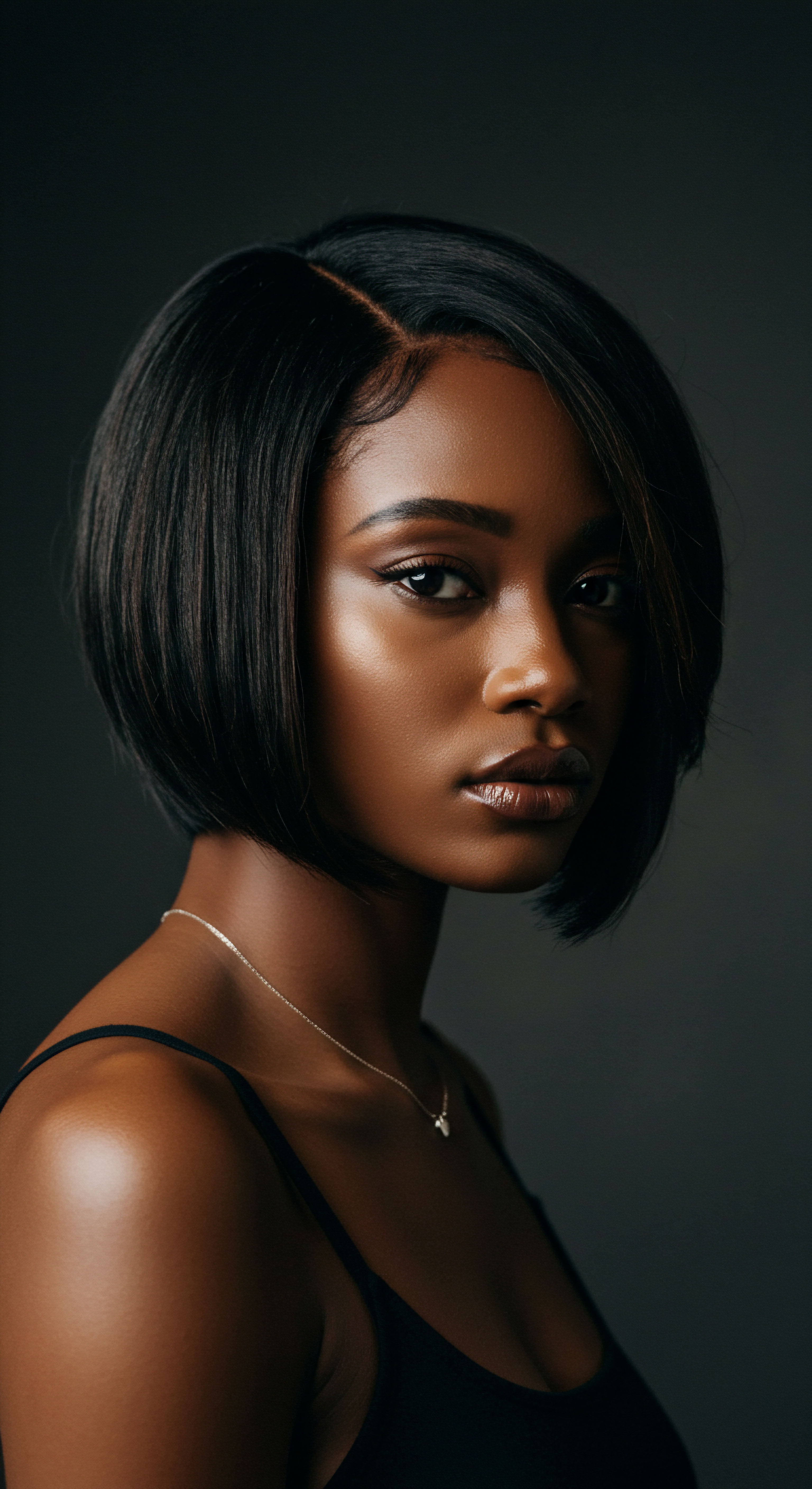
The Psychology of Hair and Identity
The relationship between hair and psychological well-being is undeniable, particularly for individuals with textured hair who have navigated societies dominated by Eurocentric beauty standards. The pressure to conform, often through chemical straightening or other alterations, has had a demonstrable impact on self-perception and mental health across generations.
A study by the Perception Institute in 2016 revealed that Black adolescent girls (ages 14-17) sometimes avoided exercise due to concerns about sweat affecting their straightened hair, preferring natural hairstyles for physical activity but perceiving them as less attractive than straightened hair. This illustrates how societal attitudes toward textured hair can impose significant psychological burdens, influencing daily choices and self-image. The internal conflict arising from these external pressures can be passed down, sometimes subtly, through familial interactions and expectations.
Conversely, the natural hair movement, gaining momentum in recent decades, has provided a powerful counter-narrative, promoting self-acceptance and celebrating inherent beauty. This shift represents a collective healing process, where younger generations actively reclaim and honor their natural textures, often supported by the wisdom and evolving perspectives of their elders. The intergenerational dialogue around this shift allows for a renegotiation of beauty standards and a collective journey toward self-love.

How Does Generational Trauma Affect Hair Perception?
The concept of generational trauma, or intergenerational trauma, is a powerful lens through which to view the complexities of hair traditions. Trauma, whether from systemic oppression, discrimination, or personal adversity, can leave lasting imprints that pass through families, influencing behaviors, beliefs, and even physical health. In the context of textured hair, this can manifest as internalized racism, a preference for Eurocentric hair textures, or a deep-seated anxiety about one’s natural hair.
Research indicates that “generational hair shaming,” where children are told their hair is “nappy” or “unmanageable” by caregivers or media, can significantly impact self-worth and pride. This shaming, often unintentional, stems from historical societal pressures that denigrated Black hair. A significant, yet often overlooked, consequence of these practices and the pursuit of “good hair” standards is the prevalence of hair loss among Black women due to damaging styling practices like excessive braiding, weaving, and chemical relaxing. This ongoing issue underscores a cycle where historical trauma, perpetuated by societal beauty norms, directly impacts the physical health and self-esteem of subsequent generations.
However, awareness of this trauma is also fostering healing. The natural hair movement is not just about aesthetics; it is a movement toward psychological liberation and cultural affirmation. It is a collective effort to disrupt cycles of pain, promoting a healthier relationship with hair that honors ancestral heritage rather than conforming to oppressive standards.
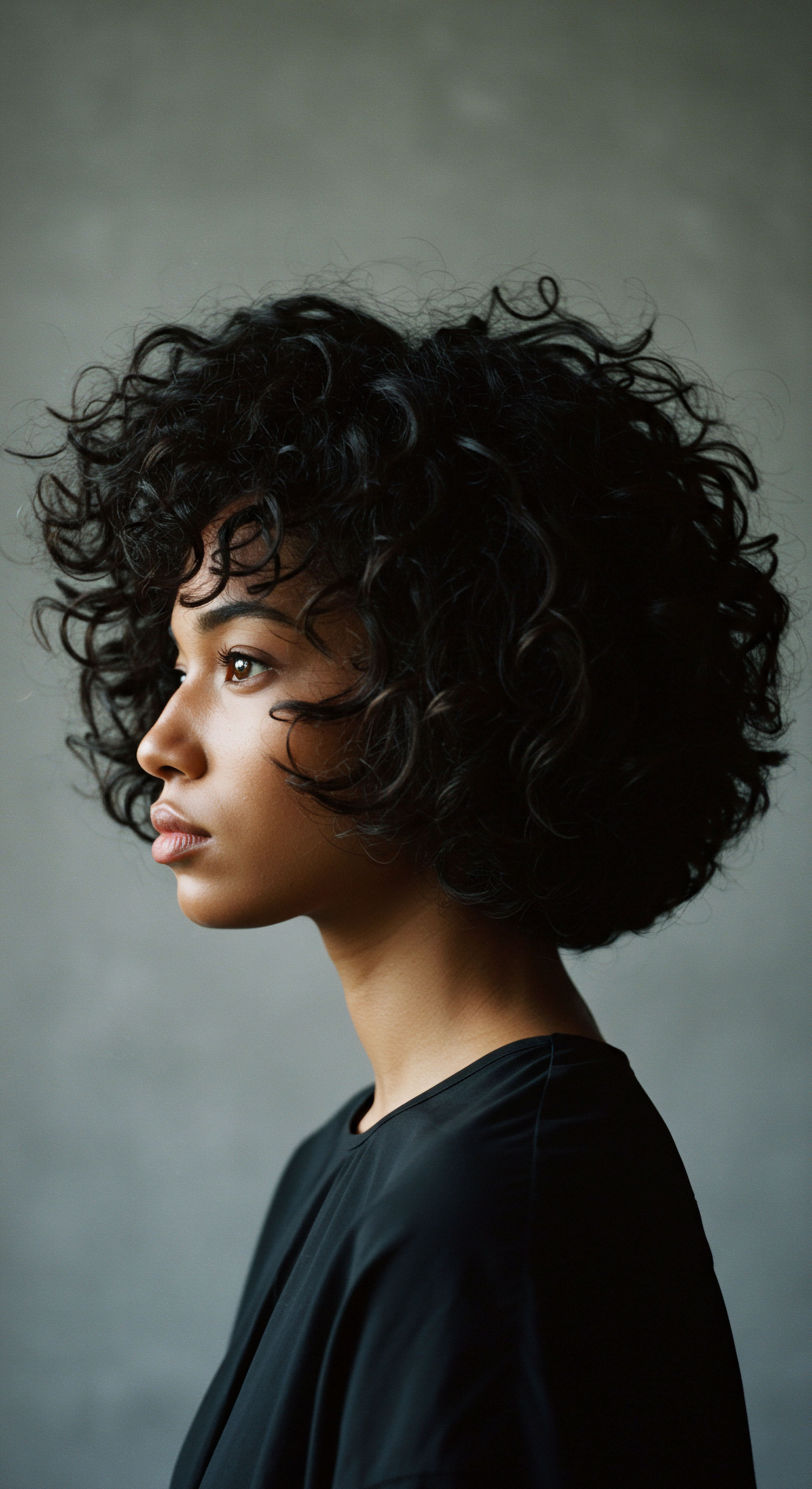
The Socio-Economic Dimensions of Hair
Hair traditions also carry socio-economic implications that span generations. Historically, hair discrimination has created barriers to education and employment for individuals with textured hair, pushing some to adopt styles perceived as more “professional” or “acceptable” in predominantly white spaces.
The CROWN Act (Creating a Respectful and Open World for Natural Hair), enacted in many U.S. states, is a direct response to this ongoing discrimination, prohibiting race-based hair bias in workplaces and schools. This legislative action highlights the systemic nature of hair-related challenges and the collective efforts across generations to dismantle them. The conversations within families about navigating these discriminatory landscapes, offering advice on presenting oneself while maintaining a sense of identity, are crucial aspects of intergenerational exchange.
Furthermore, the economics of hair care, from the specialized products required for textured hair to the time and financial investment in protective styles or salon visits, are often discussed and budgeted within families. This practical knowledge, passed down through generations, ensures that individuals are equipped to care for their hair effectively within their economic realities.
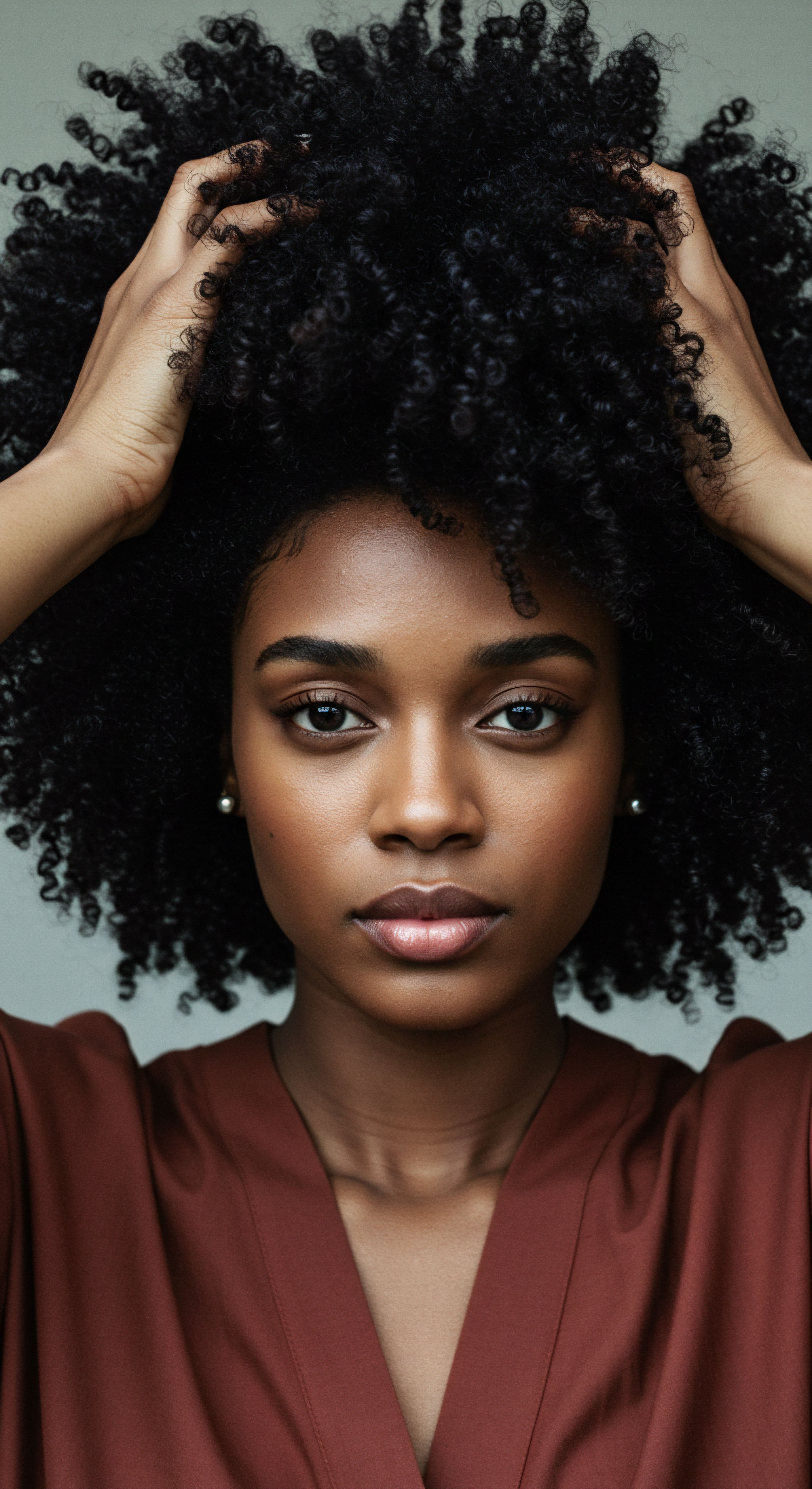
Reflection
As we consider the journey through hair traditions, from the very biology of a strand to the complex societal currents that shape its meaning, a quiet understanding settles. Hair, in its myriad forms and expressions, is a profound connector, a living dialogue between past, present, and future. It speaks of survival, creativity, and the enduring human spirit.
Each curl, each braid, each careful application of oil or cream, carries echoes of hands that performed the same acts generations ago, whispering stories of resilience and continuity. The beauty of textured hair is not merely visual; it is a testament to the powerful, often unspoken, ways in which identity, heritage, and care are passed down, creating a legacy that continues to grow, adapting and affirming itself with each passing moment.
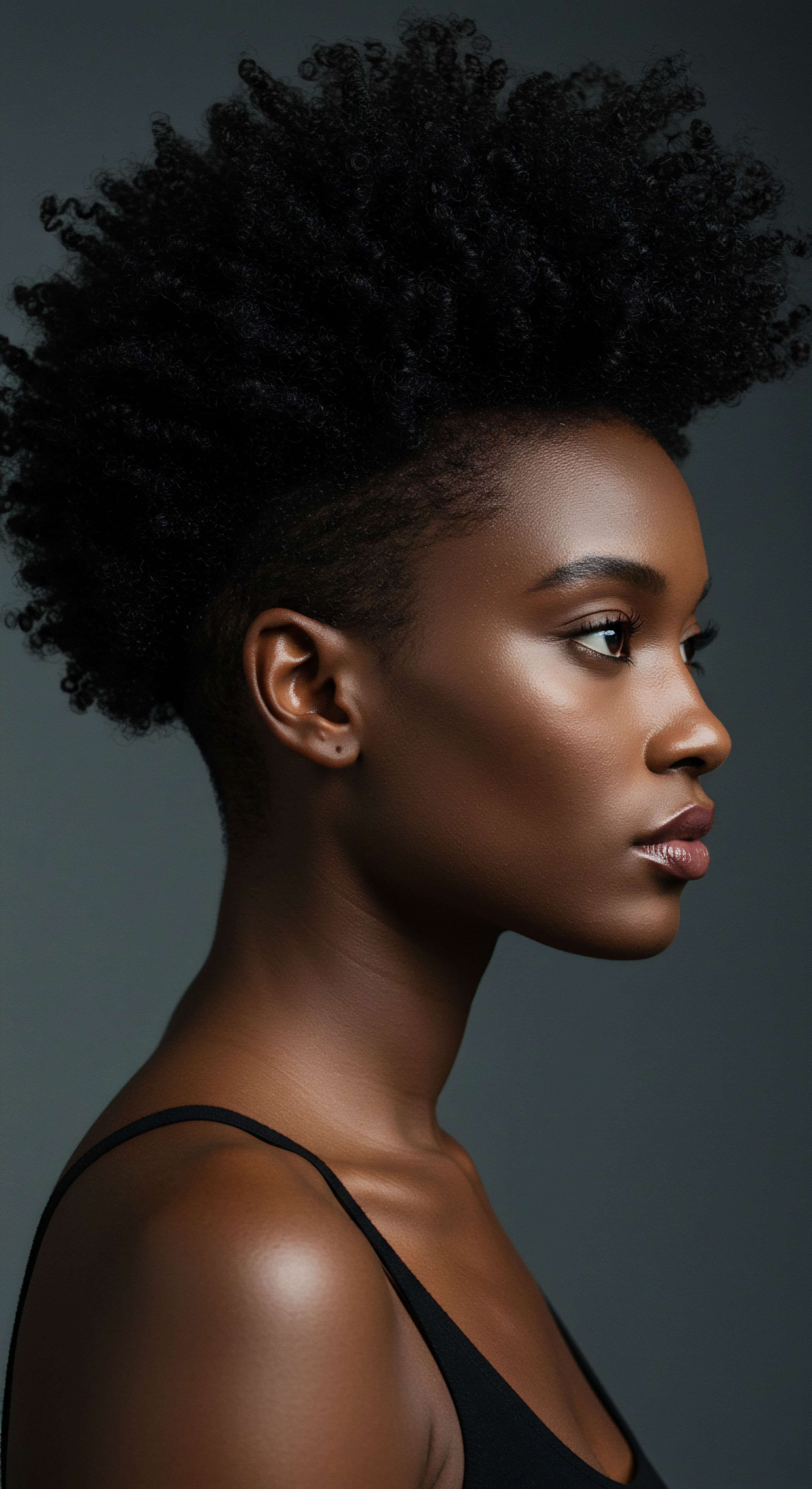
References
- Byrd, A. D. & Tharps, L. L. (2001). Hair Story ❉ Untangling the Roots of Black Hair in America. St. Martin’s Press.
- Dabiri, E. (2019). Twisted ❉ The Tangled History of Black Hair Culture. Harper Perennial.
- Ellington, T. (2020). Textures ❉ The History and Art of Black Hair. Schiffer Publishing.
- Mbilishaka, A. (2018). Black Hair Matters ❉ An Introduction to Afro-Psychology.
- Mercer, K. (1987). Black Hair/Style Politics. New Formations, 3, 33-52.
- Peacock, T. N. (2019). African American Hair and Beauty ❉ Examining Afrocentricity and Identity Through the Reemergence and Expression of Natural Hair in the 21st Century. University of South Florida.
- Rajan-Rankin, S. (2021). Material Intimacies and Black Hair Practice ❉ Touch, Texture, Resistance. Journal of Material Culture, 26(3), 329-346.
- Sherrow, V. (2006). Encyclopedia of Hair ❉ A Cultural History. Greenwood Press.
- Stokrocki, M. (2010). An Intergenerational and Semiotic Exploration of Hair Combs as Material Culture. International Journal of Education Through Art, 6(2), 163-179.
- Synnott, A. (1987). Shame and Glory ❉ A Sociology of Hair. The British Journal of Sociology, 38(3), 381-413.
- Woolford, S. J. et al. (2016). Perceptions of hair and exercise among African American adolescent girls. Health Education Research, 31(1), 11-20.